
views
Deciding Whether to Change Your Name

Have a valid reason for the change. People desire to change their names for a variety of reasons: they get married or divorced, they dislike their name, or because they are changing genders. Others change simply because they do not like their current name.
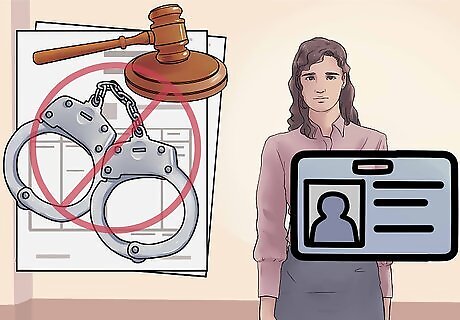
Avoid changing your name for a prohibited reason. People are not allowed to change their names in an effort to avoid punishment for crimes, to defraud others, or to avoid honoring responsibilities (like paying debts or maintaining child support payments). If a court later decides that a person’s reason for changing his or her name was a desire to defraud, then the name change will be ineffective.

Choose whether to formally change your name. Like a number of states, Oregon allows residents to change their names without going through the court system. Instead, residents can just go ahead and start using their new name, which will be honored. Nevertheless, it is rarely wise to change a name informally. An informal name change makes it difficult to establish your identity using official government documents.
Formally Changing Your Name

Obtain forms. Go to the courthouse in the county in which you live. Ask your local court clerk for a copy of the required procedures, and gather the following list of forms. Some counties do not provide forms but will direct you to a stationer’s where you can buy forms: Petition for Change of Name Notice of Change of Name Hearing Change of Name Order/Decree Affidavit—Proof of Posting Notice of Change of Name Hearing Notice of Change of Name Decree Affidavit—Proof of Posting Notice of Name Change
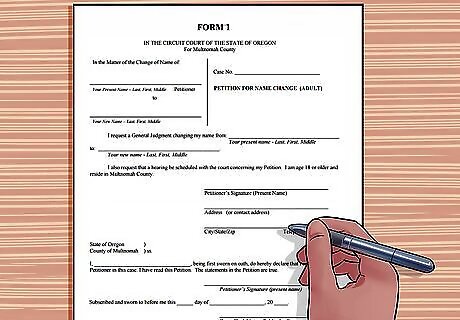
Complete the Petition. Use either a typewriter or a pen with blue or black ink. When filling out the Petition for Change of Name, as well as all of the other forms, you must use your full name. Do not sign the Petition. You must sign it in front of a notary. Be sure to bring a valid personal ID (such as a driver’s license or passport) when signing in front of the notary. The court clerk can probably notarize; call ahead and ask. Make at least 2 copies of every form you fill out.
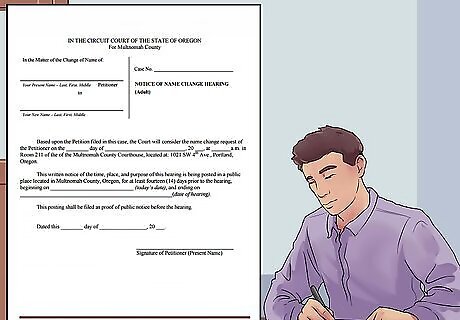
Complete the Notice of Change of Name Hearing form. Complete this form in the same manner as the Petition. You will take this form with you (along with the Petition) to the clerk of court. At the clerk’s, pick up a hearing date. It must be at least 14 days after the date you are filing the Petition and the Notice.
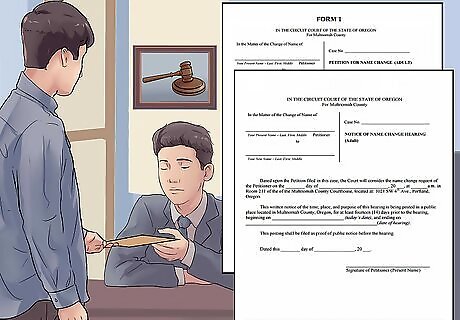
File the Petition and Notice. The current fee is $111. If it changes, the clerk will alert you. If you cannot afford the fee, ask for a fee waiver form and fill it out.
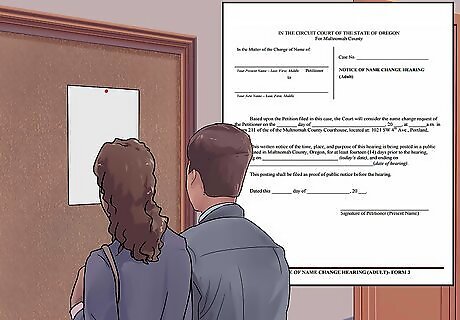
Post the Notice of Change of Name Hearing. You must post this in the courthouse and leave it up for 14 days. The purpose of posting this Notice is to alert the public in case anyone wants to come to the hearing and challenge your change of name. Ask the clerk where and how to post it.
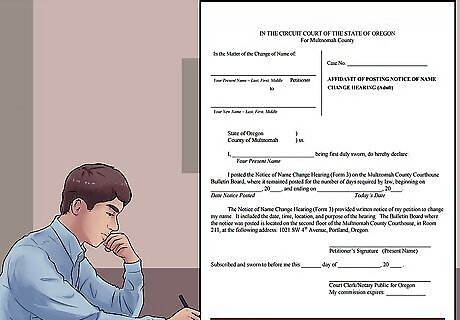
Complete the Affidavit—Proof of Posting Notice of Hearing form. Complete this form but do not sign it. You must sign it in front of the clerk and have it notarized. Attach a copy of the Notice of Change of Name Hearing form. The purpose of this form is to attest, by an affidavit, that you have properly posted the Notice of Change of Name Hearing form.
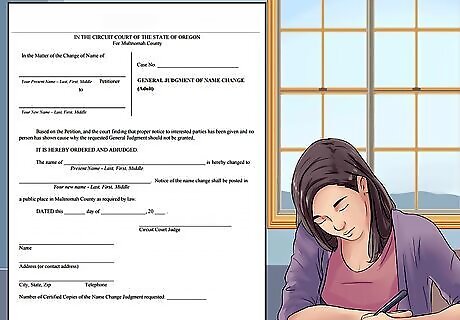
Fill out the Change of Name Decree. After filling in the information, you should not sign or date the decree. The judge will do this after approving your request for a name change.

Attend a hearing. The day of the hearing, you should bring with you the Change of Name Decree, the Notice of Change of Name Decree, and the Affidavit—Proof of Posting Notice of Hearing. You should have the clerk notarize the Affidavit—Proof of Posting Notice of Hearing form. Go to the courtroom. At the hearing, the judge will sign the Change of Name Decree. Be prepared to explain why you want to change your name. If no one objects, then this should be a straightforward process.
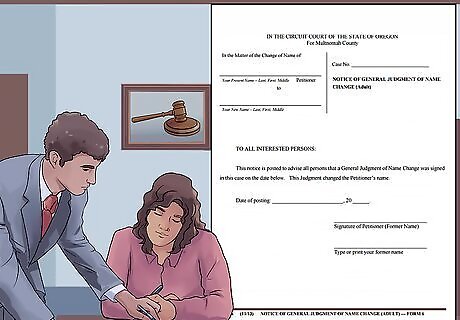
Return to the clerk’s office. After the hearing, return to the clerk’s office and complete the Notice of Change of Name Decree. Make 2 copies. Then, post the Notice of Change of Name Decree in the courthouse area for public notice. You will then wait 14 days before returning to the clerk’s office.
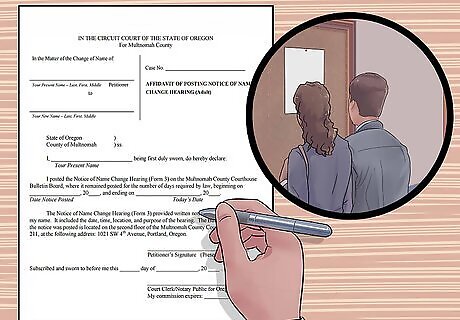
Complete the Affidavit—Proof of Posting Notice of Name Change, but do not sign it. Attach a copy of the Notice of Change of Name Decree. At the clerk’s office, bring the Affidavit—Proof of Posting. The clerk will notarize after you sign. File the document with the clerk.
Notifying Others
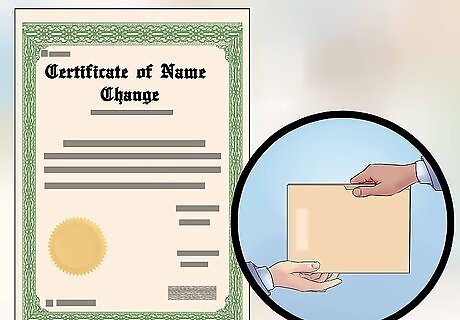
Get your certificate of name change. Ask the clerk how many copies of the certificate you should get and whether they should be certified.
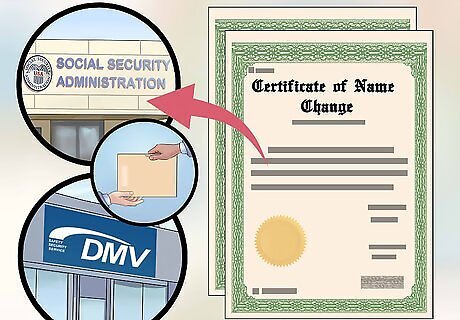
Send copies of the name change certificate to other parties. You may want to send copies of your name change certificate to the following: the Social Security Administration the post office banks and other financial organizations the three major credit reporting bureaus your local voter registration office as well as the DMV the IRS the government passport office, if you ever plan to travel universities you attended from which you might obtain transcripts in the future

Revise any estate plan and other documents. You will want to contact your attorney and revise any will, durable power of attorney, medical power of attorney, or similar document to reflect your new name. To be in agreement with Oregon’s statutes, you should note your old name along with your new name on the new document. You may want to alert all business associates and friends of your new name. Fortunately, you do not need to send them official copies of your name change certificate.



















Comments
0 comment